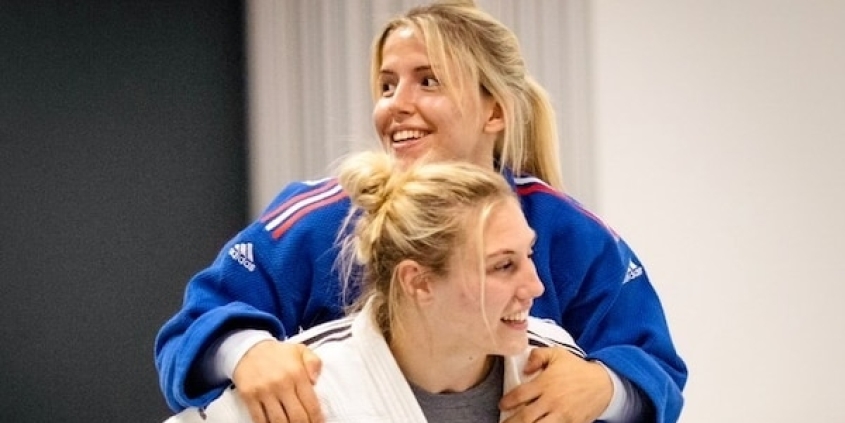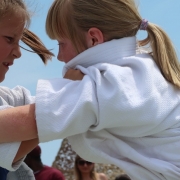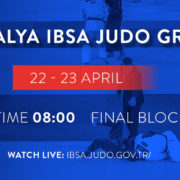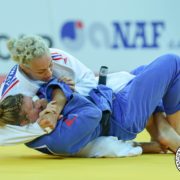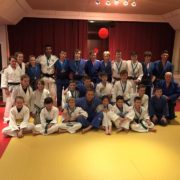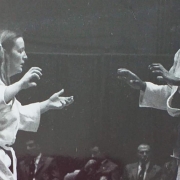Women in judo: Holland and Barrett chat with Emma Reid & Kelly Petersen-Pollard
British Judo is lucky to have Holland and Barrett (H&B) on board with the GB judo squad who train at the Olympic and Paralympic National Training Centre. In an off-the-mat chat with Emma and Kelly, ranked 15th and 10th in the world respectively, H&B explored how they feel as women judoka.
Women were once banned from judo for their apparent “fragile” nature, though today you’ll find Judo making huge strides towards inclusivity, as one of only a handful of competitive sports with mixed-gender opponents. It’s also one of the most accessible martial arts for visually impaired people, with over 100 Judo clubs in the UK welcoming blind and partially-sighted members.
Emma and Kelly spoke about their experiences as women in judo: “I think at club level, maybe in England, there are more men on the mat,” says Kelly. And it’s true – only 24% of registered BJA judoka are women. But as a whole, judo’s not really divided like that. It’s not harder if you’re female or male – it’s pretty much the same for everyone.”
Both Emma and Kelly have had validating experiences at the British Judo Association: “We’re male, female and visually impaired [categories], all in here at the same time. So, it’s really open to everyone,” Kelly explains, generating an almost family-like camaraderie within the team.
It’s not just about the athletes: mixed-gender contests could help bring in recognition from less inclusive crowds, too.
Hopefully, times are changing – especially in light of the Lionesses’ monumental Euros win – but the phrase, “I don’t watch women’s sports,” is one we’ve heard thousand times over. It’s the reason that, according to UNESCO, outside of major sporting events women make up 40% of all athletes yet receive 4% of the coverage. Here, maybe judo can be the exception.
“We fight on the same days, and we’ll be on separate mats [next to each other],” Emma says. “So people aren’t forced to watch it but it’s harder to differentiate between male and female Judo. It’s the same rules, same times: there are no disadvantages or advantages for boys vs girls.”
No matter how inclusive Judo is within its community, female participation won’t increase until young women see themselves as future Judoka. 43% of teenage girls say they considered themselves sporty in primary school, though stated they didn’t any longer and by 17 years old, 64% of girls have quit sports altogether.
This research – published by Women in Sport in 2022 – cited being judged by others as their main worry, with just under half explaining they were too busy with schoolwork to carry on doing sports.
This is presumably the same schoolwork as their male counterparts, 54% of which called themselves “very active”. Is it that these young people have the same amount of free time, but that girls aren’t made to feel like sport is a viable path for them?
Expanding the Judo community could help instil confidence in these girls from a young age. “Exposure to more diverse sporting events could inspire some younger people,” Emma suggests.
“If they don’t know what sport to go into, they might watch Judo and be like, ‘wow, I want to do that’ – well, hopefully. I think some girls might be a bit nervous coming in, thinking they are going to have to fight boys, so having an all-girls camp may help. We sometimes do masterclasses, where we go to clubs and try and inspire those younger people to stay in [judo].”
The H&B team also explored the recent Commonwealth Games medallists’ greatest wins, wellbeing tips, and hopes for the future.
You can watch the full interview with Emma and Kelly below, or read the full article ‘Women in Judo: A chat with Emma Reid and Kelly Petersen-Pollard‘ on the Holland and Barrett website.
Watch out for further news from British Judo by checking out our latest news section. You can also catch up via our official social media platforms, Facebook, Twitter and Instagram.

